 W
WBenjamin Creme was a Scottish artist, author, esotericist, and editor of Share International magazine.
 W
WGiulio Cesare Andrea Evola, better known as Julius Evola, was an Italian philosopher, poet, painter, antisemitic conspiracy theorist, esotericist, and occultist. He has been described as a "fascist intellectual", a "radical traditionalist", "antiegalitarian, antiliberal, antidemocratic, and antipopular", and as having been "the leading philosopher of Europe's neofascist movement".
 W
WAntonin Gadal was a French mystic and historian who dedicated his life to study of the Cathars in the south of France, their spirituality, beliefs and ideology.
 W
WRené-Jean-Marie-Joseph Guénon, also known as Abd al-Wahid Yahya, was a French author, Traditionalist and perennial philosopher who remains an influential figure in the domain of metaphysics having written on topics ranging from "sacred science", to symbolism and initiation.
 W
WManly Palmer Hall was a Canadian-born author, lecturer, astrologer and mystic. He is best known for his 1928 work The Secret Teachings of All Ages. Over his 70 year career, he gave thousands of lectures, including two at Carnegie Hall, and published over 150 volumes. In 1934, he founded The Philosophical Research Society in Los Angeles, which he dedicated to the "Truth Seekers of All Time", with a research library, lecture hall and publishing house. Many of his lectures can be found online and his books are still in print.
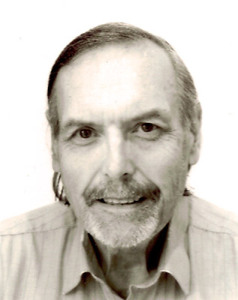 W
WMichael Howard (1948–2015) was an English practitioner of Luciferian witchcraft and a prolific author on esoteric topics. From 1976 until his death he was the editor of The Cauldron magazine.
 W
WRaymond Howard was an English practitioner of the modern Pagan new religious movement of Wicca. He promoted his tradition, known as the Coven of Atho, through a correspondence course established in the early part of the 1960s.
 W
WAlejandro Jodorowsky Prullansky is a Chilean-French filmmaker and artist. Since 1948, Jodorowsky has worked as a novelist, screenwriter, a poet, a playwright, an essayist, a film and theater director and producer, an actor, a film editor, a comics writer, a musician and composer, a philosopher, a puppeteer, a mime, a lay psychologist, a draughtsman, a painter, a sculptor, and a spiritual guru. Best known for his avant-garde films El Topo (1970) and The Holy Mountain (1973), he has been "venerated by cult cinema enthusiasts" for his work which "is filled with violently surreal images and a hybrid blend of mysticism and religious provocation".
 W
WCharles Johnston was an Irish writer, journalist, theosophist, naturalist, and Sanskrit scholar. Johnston joined the Indian Civil Service in 1888 but left India after two years due to malaria and settled in the United States of America in 1896. He wrote numerous books on Indian philosophy, translating works from Sanskrit as well as on Theosophy. He was married to the niece of Madame Blavatsky and was involved in the development of the Theosophical Society in the United States.
 W
WEvan John Jones (1936–2003) was an English traditional witch, occultist and writer who operated within the tradition of Cochrane's Craft.
 W
WPhiléas Lebesgue was a French essayist and translator. At once a poet, novelist, essayist, translator and literary critic.
 W
WJohn Frederick Carden Michell was an English author and esotericist who was a prominent figure in the development of the Earth mysteries movement. Over the course of his life he published over forty books on an array of different subjects, being a proponent of the Traditionalist school of esoteric thought.
 W
WMadeline Montalban was an English astrologer and ceremonial magician. She co-founded the esoteric organisation known as the Order of the Morning Star (OMS), through which she propagated her own form of Luciferianism.
 W
WPyotr Demianovich Ouspenskii, was a Russian esotericist known for his expositions of the early work of the Greek-Armenian teacher of esoteric doctrine George Gurdjieff. He met Gurdjieff in Moscow in 1915, and was associated with the ideas and practices originating with Gurdjieff from then on. He taught ideas and methods based in the Gurdjieff system for 25 years in England and the United States, although he separated from Gurdjieff personally in 1924, for reasons that are explained in the last chapter of his book In Search of the Miraculous.
 W
WTommaso Palamidessi was an Italian esotericist. Precociously attracted by astrology, parapsychology, and yoga-tantric doctrines, he was led by his manifold interests in the field of the occult and by his intense spiritual pursuit to build up an original form of Esoteric Christianity, which he called Archeosophy. In 1968, he founded in Rome the Archeosophical Society, which is still active and counts a few thousand members both in Italy and in the rest of Europe.
 W
WJohn Whiteside Parsons was an American rocket engineer, chemist, and Thelemite occultist. Associated with the California Institute of Technology (Caltech), Parsons was one of the principal founders of both the Jet Propulsion Laboratory (JPL) and the Aerojet Engineering Corporation. He invented the first rocket engine to use a castable, composite rocket propellant, and pioneered the advancement of both liquid-fuel and solid-fuel rockets.
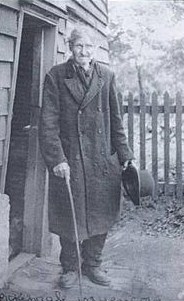 W
WGeorge Pickingill was an English farm labourer who lived and worked in the village of Canewdon in the eastern English county of Essex. Widely considered to be a cunning man, or vocational folk magician, he reportedly employed magical means to offer cures for ailments and to locate lost property, although was also alleged to have threatened to place curses on people.
 W
WJules Denis, Baron du Potet or Dupotet de Sennevoy was a French esotericist. He became a renowned practitioner of mesmerism—the theories first developed by Franz Mesmer involving animal magnetism.
 W
WPythagoras of Samos was an ancient Ionian Greek philosopher and the eponymous founder of Pythagoreanism. His political and religious teachings were well known in Magna Graecia and influenced the philosophies of Plato, Aristotle, and, through them, Western philosophy. Knowledge of his life is clouded by legend, but he appears to have been the son of Mnesarchus, a gem-engraver on the island of Samos. Modern scholars disagree regarding Pythagoras's education and influences, but they do agree that, around 530 BC, he travelled to Croton in southern Italy, where he founded a school in which initiates were sworn to secrecy and lived a communal, ascetic lifestyle. This lifestyle entailed a number of dietary prohibitions, traditionally said to have included vegetarianism, although modern scholars doubt that he ever advocated for complete vegetarianism.
 W
WRichard Rose was an American mystic, esoteric philosopher, author, poet, and investigator of paranormal phenomena. He published a number of books and spoke widely in universities and other venues across the country during the 1970s and 1980s.
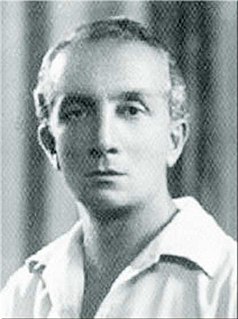 W
WMassimo Scaligero, born Antonio Sgabelloni in Veroli, Italy (1906–1980) an Italian spiritual teacher, member of "Gruppo di Ur", esotericist and anthroposophist.
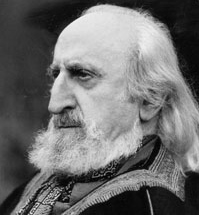 W
WFrithjof Schuon was a Swiss metaphysician and spiritual master of German descent, belonging to the Perennialist or Traditionalist School of thought. He was the author of more than twenty works in French on metaphysics, spirituality, the religious phenomenon, anthropology and art, which have been translated into English and many other languages. He was also a painter and a poet.
 W
WJohann Georg Schwarz was a Transylvanian German-born Russian Imperial philosophy professor at Moscow Imperial University who headed the Russian branch of the Rosicrucian Society.
 W
WPaul Sédir or Sédir was a French mystic and esotericist, notable as the author on several works on esotericism and Christian mysticism.
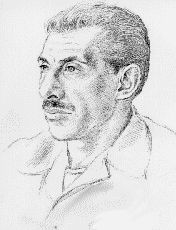 W
WIdries Shah, also known as Idris Shah, né Sayed Idries el-Hashimi and by the pen name Arkon Daraul, was an author and teacher in the Sufi tradition who wrote over three dozen books on topics ranging from psychology and spirituality to travelogues and culture studies, and also a leading thinker of the 20th century.
 W
WWilfred Talbot Smith was an English occultist and ceremonial magician known as a prominent advocate of the religion of Thelema. Living most of his life in North America, he played a key role in propagating Thelema across the continent.
 W
WRichard Smoley is an author and philosopher focusing on the world's mystical and esoteric teachings, particularly those of Western civilization.
 W
WRudolf Joseph Lorenz Steiner was an Austrian philosopher, social reformer, architect, esotericist, and claimed clairvoyant. Steiner gained initial recognition at the end of the nineteenth century as a literary critic and published philosophical works including The Philosophy of Freedom. At the beginning of the twentieth century he founded an esoteric spiritual movement, anthroposophy, with roots in German idealist philosophy and theosophy; other influences include Goethean science and Rosicrucianism.
 W
WMarcel Joseph Vogel was a research scientist working at the IBM San Jose Research Center for 27 years. He is sometimes referred to as Dr. Vogel, although this title was based on an honorary degree, not a Ph.D. Later in his career, he became interested in various theories of quartz crystals and other occult and esoteric fields of study. The Vogel Crystal type cut was created by him.